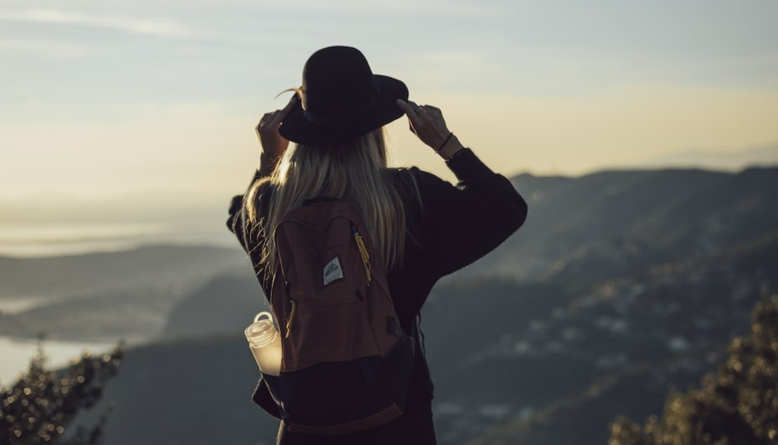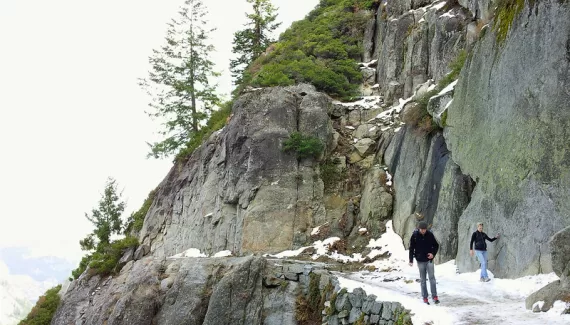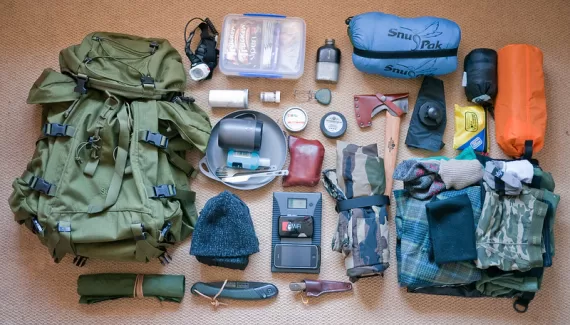As a solo hiker, I have had some of the most incredible experiences of my life. There is something truly special about being alone in nature, with nothing but the sound of the wind and the rustling of leaves for company. But, solo hiking also comes with its risks and challenges. In this ultimate guide to solo hiking, I will share with you some tips and tricks that I have learned over the years to ensure a safe and enjoyable adventure.
Introduction to Solo Hiking
Solo hiking refers to the act of hiking alone, without the company of others. While it may seem daunting at first, solo hiking can be an incredibly rewarding experience. It allows you to set your own pace, choose your own path, and connect with nature on a deeper level.
However, solo hiking also comes with its own set of risks. Without anyone else around, you are solely responsible for your safety. That being said, with the right preparation and mindset, solo hiking can be a safe and enjoyable adventure.
Benefits of Solo Hiking
One of the biggest benefits of solo hiking is the sense of freedom and independence that it provides. When you are hiking alone, you are free to choose your own path, set your own pace, and make your own decisions. You don’t have to worry about anyone else’s schedule or needs, and you can take as much time as you need to appreciate the beauty of your surroundings.
Solo hiking also provides an opportunity for self-reflection and personal growth. When you are alone in nature, you have the time and space to think deeply about your life and your goals. It can be a chance to disconnect from the stress of everyday life and reconnect with yourself.
Preparing for a Solo Hike
Before embarking on a solo hike, it is important to take the time to prepare properly. This includes researching the trail, checking the weather forecast, and packing all the necessary gear.
Researching the trail beforehand will give you an idea of what to expect in terms of difficulty and terrain. It is also important to check if there are any potential hazards, such as wildlife or dangerous cliffs. Make sure to bring a map and compass, and familiarize yourself with the route before you begin.
Check the weather forecast before you leave, and pack accordingly. Bring warm layers if it will be cold, and rain gear if there is a chance of precipitation. It is also important to pack enough food and water for the duration of your hike, and to bring a first aid kit in case of an emergency.
Related Article: Find Your Next Adventure: Discovering the Best Hidden Gem Hiking Destinations
Solo Hiking Safety Tips
When hiking alone, safety should always be your top priority. Here are some tips to help ensure a safe and enjoyable solo hike:
Let someone know where you are going and when you expect to return. Carry a whistle and know how to use it in case of an emergency.
Stay on the trail and avoid taking shortcuts.
Be aware of your surroundings and listen for any unusual sounds. Keep a safe distance from wildlife and never approach or feed them. Carry a bear spray if you are hiking in an area with bears.
Know how to perform basic first aid, and bring a first aid kit with you.
Avoid hiking at night, and always bring a headlamp or flashlight just in case.
Hiking Alone as a Woman – Is it Safe?
As a woman, hiking alone can feel especially daunting. However, with the right preparation and mindset, it can be just as safe as hiking with a group. Here are some tips for women who want to hike alone:
- Choose a well-traveled trail, preferably one that is popular with other hikers.
- Dress modestly to avoid unwanted attention.
- Avoid hiking alone at night, and stick to the daylight hours.
- Bring a personal safety alarm or whistle to alert others in case of an emergency.
- Trust your instincts – if something doesn’t feel right, leave the area immediately.
- Consider taking a self-defense class to feel more confident in your ability to protect yourself.
Choosing the Right Trail for a Solo Hike
When choosing a trail for a solo hike, it is important to consider your own abilities and experience level. Choose a trail that matches your fitness level and experience, and be honest with yourself about your limitations.
It is also important to consider the length and difficulty of the trail. If you are new to solo hiking, start with a shorter and easier trail and work your way up to longer and more difficult hikes.
Lastly, consider the location and terrain of the trail. Choose a trail that is close to home and easy to access, and be aware of potential hazards such as steep cliffs or wildlife.
Essential Gear for Solo Hiking
When hiking alone, it is important to pack all the necessary gear to ensure your safety and comfort. Here are some essentials to consider:
- Backpack: A comfortable backpack to carry all your gear. Navigation tools: Map, compass, and GPS device.
- First aid kit: Bandages, gauze, antiseptic, and any necessary medications. Water and food: Bring enough water and food to last the duration of your hike. Clothing: Dress in layers and bring rain gear if necessary.
- Headlamp or flashlight: In case of emergency or if you get caught out after dark. Personal safety alarm or whistle: To alert others in case of emergency.
- Bear spray: If hiking in an area with bears.
- Multi-tool: For any necessary repairs or adjustments.
How to Navigate on a Solo Hike
Knowing how to navigate is essential when hiking alone. Here are some tips to help you stay on track:
- Familiarize yourself with the trail beforehand.
- Check your map and compass frequently.
- Look for landmarks and use them to orient yourself.
- Pay attention to trail markers and signs.
- If you get lost, stop and take a deep breath.
- Try to retrace your steps and find your way back to the trail. If you are still lost, use your GPS device or call for help.
Solo Hiking Etiquette – Why Not to Hike with Headphones
When hiking alone, it can be tempting to listen to music or podcasts to pass the time. However, this can be dangerous and is generally discouraged. Here’s why:
- Listening to music or podcasts can distract you from potential hazards such as wildlife or dangerous cliffs.
- It can also prevent you from hearing other hikers or animals approaching.
- Hiking without headphones allows you to fully immerse yourself in nature and appreciate the sounds of the wilderness.
What to Do if You Encounter Wildlife on a Solo Hike
Encountering wildlife on a solo hike can be a thrilling experience, but it is important to remember to keep a safe distance and never approach or feed them. Here’s what to do if you encounter wildlife:
- Stay calm and quiet.
- Give the animal plenty of space.
- Do not make direct eye contact.
- Slowly back away and leave the area.
- If the animal approaches you, make yourself appear larger and make loud noises to scare it away.
Solo Hiking Trails to Explore
There are countless beautiful solo hiking trails to explore around the world. Here are a few that I recommend:
- Pacific Crest Trail, USA: A 2,650-mile trail that runs from Mexico to Canada.
West Coast Trail, Canada: A 47-mile trail that runs along the coast of Vancouver Island.
- Overland Track, Australia: A 40-mile trail that runs through the Tasmanian wilderness.
Laugavegur Trail, Iceland: A 34-mile trail that takes you through some of Iceland’s most stunning landscapes.
- Camino de Santiago, Spain: A 500-mile trail that takes you through the beautiful countryside of Spain.
Backpacking for a Solo Hiking Trip
Backpacking allows you to explore even more remote areas and spend more time in nature. Here are some tips for backpacking on a solo hiking trip:
- Choose a backpack that is comfortable and fits well. Pack only the essentials, and avoid overpacking.
- Bring a lightweight tent, sleeping bag, and sleeping pad.
- Pack lightweight and easy-to-prepare meals, such as dehydrated food.
- Bring a water filter or purification tablets to ensure safe drinking water.
- Be prepared for inclement weather by bringing rain gear and warm layers.
- Follow Leave No Trace principles and pack out all of your trash.
Solo Hiking Tips and Tricks
Here are some additional tips and tricks to help you have a safe and enjoyable solo hiking adventure: Take breaks as needed to rest and refuel.
Keep a positive attitude and enjoy the journey.
Practice good self-care by staying hydrated and nourished.
- Listen to your body and don’t push yourself too hard.
Embrace the solitude and appreciate the beauty of nature around you.
Conclusion
Solo hiking can be an incredibly rewarding experience, but it requires careful preparation and a safety-first mindset. By following the tips and tricks outlined in this ultimate guide, you can ensure a safe and enjoyable adventure on the trails. Remember to always prioritize your safety, choose the right trail for your experience level, and pack all the necessary gear. With the right preparation and mindset, solo hiking can be an unforgettable experience that you will cherish for a lifetime.
Related Article: The 10 Essentials for Hiking: Must-Have Gear for an Unforgettable Adventure
CTA
Are you ready to embark on your own solo hiking adventure? Share your favorite solo hiking tips and tricks in the comments below!


